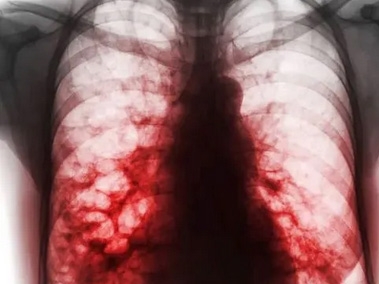Bronchiectasis and Chronic Obstructive Pulmonary Disease (COPD) are both chronic lung conditions that can significantly affect respiratory health. While they share some similarities, they have distinct causes, symptoms, and treatment approaches. Understanding the differences is crucial for effective management and care.
Bronchiectasis
– A condition characterized by the permanent dilation and damage of the bronchial tubes, leading to impaired airway clearance.
– Often results from repeated infections or inflammation, which can cause a buildup of mucus and obstruct airflow.
Chronic Obstructive Pulmonary Disease (COPD):
– A progressive lung disease primarily caused by long-term exposure to irritants, most commonly tobacco smoke.
– Characterized by chronic bronchitis (inflammation of the bronchial tubes) and emphysema (destruction of the air sacs in the lungs).
What are the common causes?
Bronchiectasis:
– Infections (e.g., pneumonia, tuberculosis).
– Genetic disorders (e.g., cystic fibrosis).
– Autoimmune diseases (e.g., rheumatoid arthritis).
– Environmental factors (e.g., exposure to toxins).
– Other conditions (e.g., bronchial obstruction, severe asthma).
COPD
– Primary cause: long-term smoking (accounts for about 85-90% of cases).
– Exposure to secondhand smoke.
– Long-term exposure to air pollution or workplace irritants (e.g., dust, chemicals).
– Genetic factors (e.g., Alpha-1 antitrypsin deficiency).
What are the common symptoms?
Bronchiectasis
– Chronic cough producing large amounts of sputum (mucus).
– Recurrent respiratory infections.
– Shortness of breath (worsens with exertion).
– Wheezing and chest tightness.
– Fatigue and general malaise.
– In severe cases, symptoms may include coughing up blood (hemoptysis).
COPD
– Persistent cough, often with sputum production.
– Shortness of breath, especially during physical activity.
– Wheezing and chest tightness.
– Frequent respiratory infections.
– Fatigue and weight loss.
– In advanced stages, symptoms may include swelling in the ankles, feet, or legs due to heart complications.
What is the Diagnosis for the following:
Bronchiectasis:
– High-resolution computed tomography (HRCT) scan to visualize airway dilation.
– Sputum cultures to identify infections.
– Pulmonary function tests to assess lung function.
– Blood tests to check for underlying conditions or infections.
COPD:
– Pulmonary function tests (especially spirometry) to measure airflow obstruction.
– Chest X-ray or CT scan to identify changes in lung structure.
– Assessment of symptoms using questionnaires (e.g., COPD Assessment Test).
– Blood tests for Alpha-1 antitrypsin deficiency in younger patients or non-smokers.
What are the treatments available for Bronchiectasis & COPD?
Bronchiectasis:
– Airway Clearance Techniques: Chest physiotherapy, postural drainage, and use of devices to help clear mucus.
Medications
– Antibiotics to treat or prevent infections.
– Bronchodilators to help open airways.
– Mucolytics to thin mucus.
– Corticosteroids in some cases to reduce inflammation.
– Vaccinations: Pneumococcal and influenza vaccines to prevent respiratory infections.
– Surgery: In severe cases, surgical resection of affected lung segments may be considered.
COPD:
– Smoking Cessation: The most critical step in treatment to slow disease progression.
Medications:
– Bronchodilators (short-acting and long-acting) to relieve symptoms.
– Inhaled corticosteroids for patients with frequent exacerbations.
– Oxygen therapy for patients with low oxygen levels.
– Pulmonary Rehabilitation: A structured program combining exercise, education, and support.
– Surgery: In severe cases, options may include lung volume reduction surgery or lung transplant.
Prognosis
Bronchiectasis:
– Varies depending on the underlying cause and severity of the disease.
– With proper management, many people can lead active lives, though it may require ongoing treatment.
COPD:
– A progressive disease that typically worsens over time, especially if smoking continues.
– Early diagnosis and treatment can significantly improve quality of life and slow progression.
Bronchiectasis and COPD are distinct lung conditions with different causes, symptoms, and treatment strategies. While both require careful management to improve quality of life, understanding their differences is essential for effective diagnosis and treatment.

